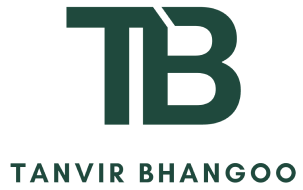
As the pace of technology innovation and digital disruption continues to accelerate, traditional team structures are no longer relevant. There is a gap in how to best structure your technology teams for optimal results within the B2C (retail, restaurants, fast casual, etc.) industry.
New technology within industries, a company’s strategic plan, brand positioning, and competitive forces all need to be considered. In fact, team structures should be evaluated every 6 months in order to stay ahead of the ever changing landscape.
How are typical digital teams structured?
Tech companies, in the context of this article, are organizations whose business models are centred around a key digital product, such as an app or online service. Examples of these companies include Uber, Spotify, TikTok, Netflix, etc. Bulk of their revenue is centred around a digital product or service.
The technology team structures for these companies is in some shape or form an agile structure. The structure usually includes a product owner, business analyst, scrum master, numerous developers, testing leads, along with some other roles.
On the contrary, most B2C companies’ business models revolve around selling products to consumers via traditional brick and mortar and online channels. When compared to tech companies, most B2C companies are only using technology as a tool and has been an after-thought for most companies till recently.
As companies within the B2C space now try to re-invent themselves, they try and replicate team structures from the above mentioned tech companies. This is a fundamental flaw.
Why does a traditional tech company team structure not work for B2C companies?
When a tech company is looking to launch a new feature, its moves at a much faster speed than a traditional B2C company. A new app feature launch can all be managed by an agile team assigned to that particular team, given the launch includes pushing an update to the app store.
When it comes to traditional B2C companies, there is a large operational component that needs to be considered, with big downstream impacts and dependencies at the store level. The value chains are far more complex for B2C companies with numerous failure points across the consumer journey.
Having a technology team focused only on digital products without a wholistic understanding of the actual business will result in failed efforts spent on enhancing products that do no drive incremental value to the overall business (piller content and quotes)
Instead, tech teams need to use a hybrid approach catered to your specific business, customers, and competitive landscape. Its half art and half science. They key is to have a team structure that allows you to be agile and execute fast, provide value to your key customers, and innovate.
For example, take a retail-first company that sells sneakers and is working to shift sales to its online e-commerce channels. The technology team managing the digital platforms (app and web) would have a team structure that includes a role to bridge the gap between online and in-store customer experience to ensure guests get the best experience regardless of the channel.
How should you structure your digital team?
I use three simple strategies that help:
1- Structure to meet your business model and goals:
First, its important to align your team structure based on your technology strategy. If your technology is outsourced, your team structure will be very different from a company who is building products in-house. For example, if tech development is outsourced, then your team structure will include roles that manage external vendors. If most tech development is in house, then a larger agile team structure would be better suited.
Then, align your structure to key initiatives or projects that are slated of the next 6-12 months. It helps to hire individuals who can play multiple positions to offer the flexibility to change your structure based on the goals at hand.
2- Anticipate key macro and micro landscape trends
To stay relevant and ahead of the curve, leadership must constantly identify key technology trends, competitive pressures, internal business changes, and how these will impact your team in the near future. If industry trends show high growth in direct to consumer channels, then carving out a role to explore direct to consumer channels may be an option.
Having the right team structure is something that should be always evolving to stay relevant in to your industry.

 How To Structure Your Team – Forbes
How To Structure Your Team – Forbes